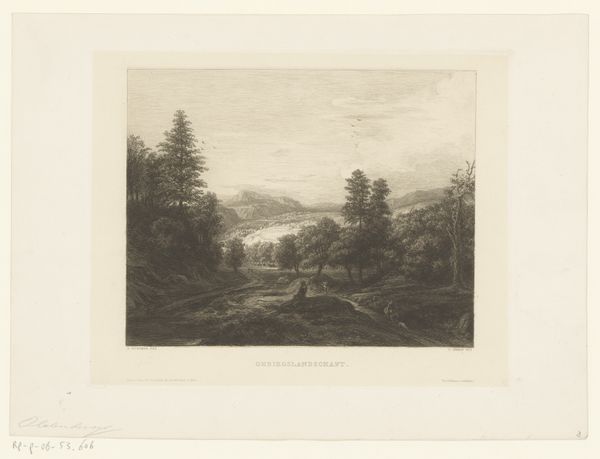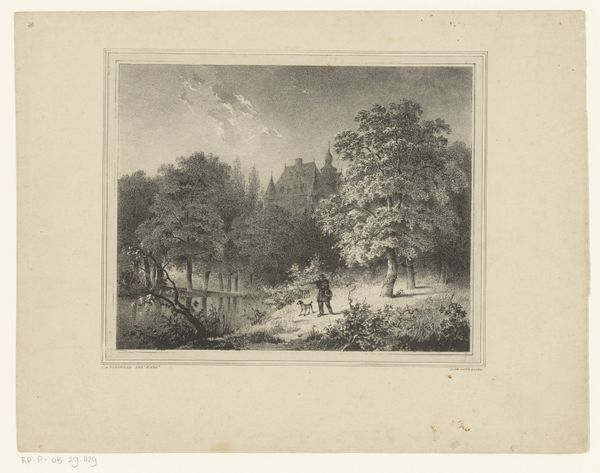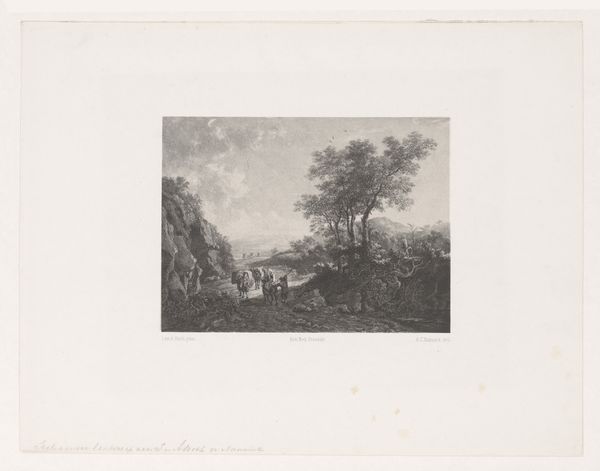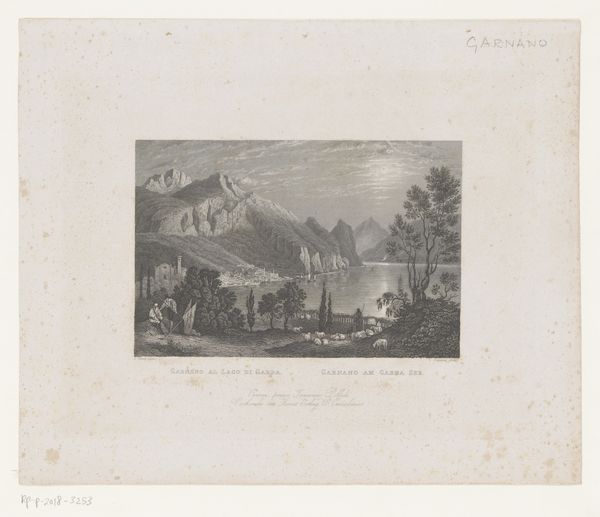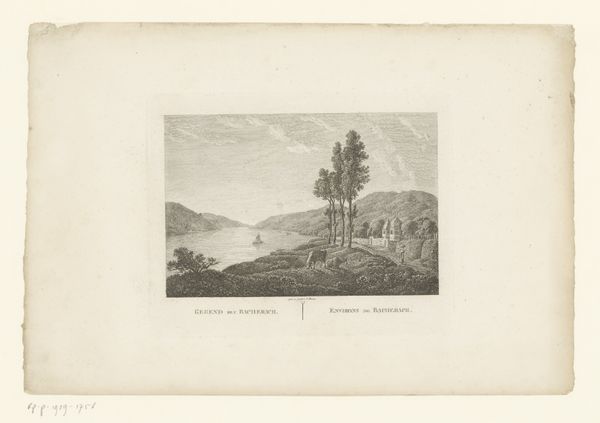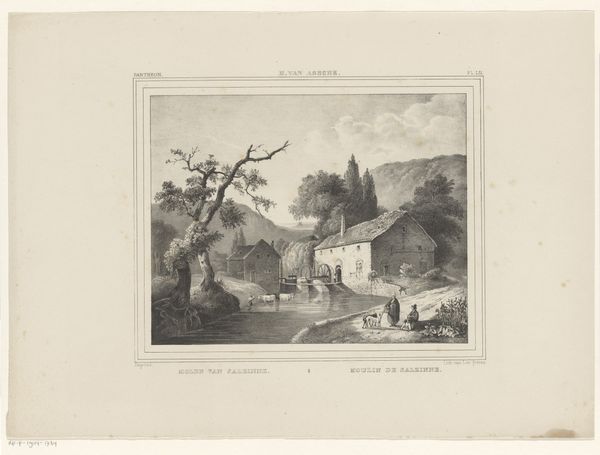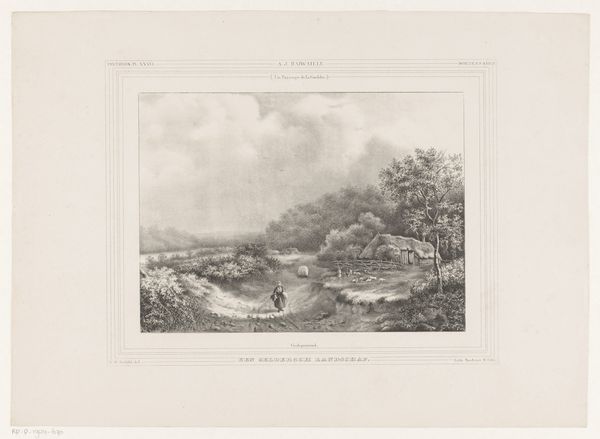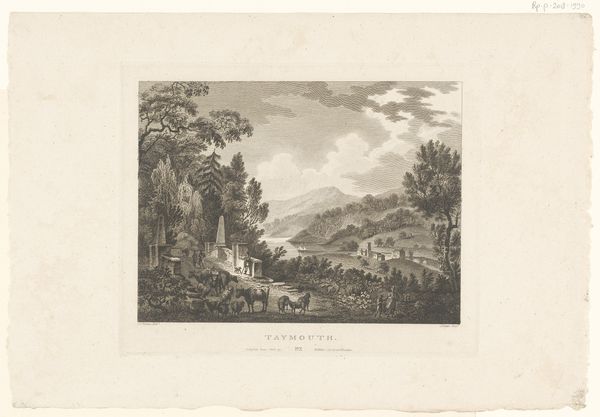
Laatste bedevaart naar het graf van Napoléon op Sint-Helena 1840 - 1841
0:00
0:00
print, engraving
#
pencil drawn
#
light pencil work
# print
#
pencil sketch
#
old engraving style
#
landscape
#
pencil drawing
#
romanticism
#
pencil work
#
history-painting
#
engraving
Dimensions: height 222 mm, width 303 mm
Copyright: Rijks Museum: Open Domain
This print, Laatste bedevaart naar het graf van Napoléon op Sint-Helena, was made by Jean-Baptiste Arnout, using a technique called lithography. With lithography, the artist draws an image with a greasy crayon or ink onto a flat stone or metal plate. The surface is then treated so that the ink adheres only to the drawn areas and is repelled by the blank areas. The printmaker then applies ink to the surface, and transfers the image onto paper. This method is perfect for capturing fine details and tonal variations, as we see here in the soft shading of the landscape and figures. Considered from a craft perspective, the lithograph is inherently about reproduction. It democratizes image-making, allowing for a single design to be shared widely. This perfectly suits the subject matter – the popular veneration of Napoleon, available for mass consumption. It is a way to scale up the aura and impact of a great man. The relatively simple process made this type of image quite popular in the 19th century. So we can see this print as an artifact not just of artistic skill, but also of industrial ambition.
Comments
No comments
Be the first to comment and join the conversation on the ultimate creative platform.

